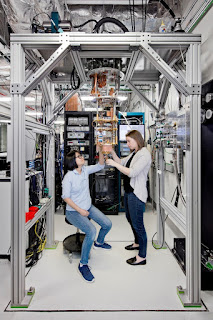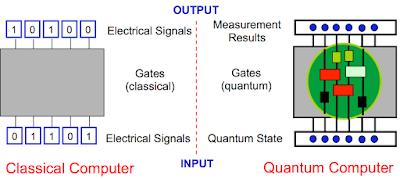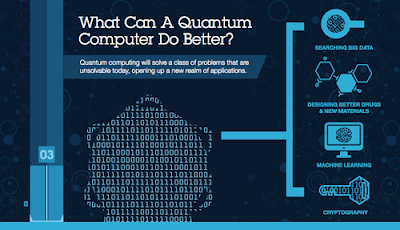Twitter Feed
Animoto = Automated Imagery PED
Over the past two days, I’ve spent quite a bit of time with Stevie Clifton, Co-founder & CTO of Animoto. Besides being one of the coolest things I’ve seen in…
World Summit of Cloud Computing 2008
Video by Animoto using cloud computing technology. (Done in 20 minutes for free)!! Follow me at https://Twitter.com/Kevin_Jackson
2008 World Summit of Cloud Computing
After a uneventful trip , I’m now in Israel for the World Summit. With over 500 people expected to attend, it promises to be an exciting time. Unfortunately, I arrived…
CloudCamp Federal ’08
| Get your Presentation Pack Follow me at https://Twitter.com/Kevin_Jackson
NCOIC Cloud Working Group
The NCOIC will be holding a cloud computing working group on December 10th during plenary session in Costa Mesa, CA. The session focus will be “Requirements for Enterprise Cloud Computing”.…
Cloud Computing vs. Cloud Services
In September, Frank Gens provided an excellent overview of the the new “Cloud Computing Era”. In preparing for an upcoming talk, I re-read the post and found myself appreciating it…
Inaugural “Inside the Cloud” Survey
Appistry and CloudCamp recently released results from the first “Inside the Cloud” survey. Key takeaways were: Amazon perceived as cloud leader, with twice as many votes as Google Infrastructure providers…
FIAC Presentation Mentions Cloud Computing
At the recent Federal Information Assurance Conference, Bob Gourley, CTO Crucial Point LLC, and former Defense Intelligence Agency CTO, recently provided his views on the state of Federal IT. His cloud…
Sun Cloud Czar
Earlier this week it was announced that, Sun, Senior Vice President, Dave Douglas, was appointed to lead the Company’s cloud computing efforts. A JDJ Article also stated that, in addition to becoming Sun’s…
- The release of a new API (Application Program Interface) for the IBM Quantum Experience that enables developers and programmers to begin building interfaces between its existing five quantum bit (qubit) cloud-based quantum computer and classical computers, without needing a deep background in quantum physics.
- The release of an upgraded simulator on the IBM Quantum Experience that can model circuits with up to 20 qubits. In the first half of 2017, IBM plans to release a full SDK (Software Development Kit) on the IBM Quantum Experience for users to build simple quantum applications and software programs.
The IBM Quantum Experience enables anyone to connect to IBM’s quantum processor via the IBM Cloud, to run algorithms and experiments, work with the individual quantum bits, and explore tutorials and simulations around what might be possible with quantum computing. Since its launch less than a year ago, about 40,000 users have run over 275,000 experiments on the IBM Quantum Experience. It has become an enablement tool for scientists in over 100 countries and, to date, 15 third-party research papers have been posted to arXiv with five published in leading journals based on experiments run on the Quantum Experience.
 The broad availability of quantum computing capability could prove to be a significant blow to current data encryption practices. In 2015 the US National Security Agency actually advised US agencies and businesses to prepare for a time when the cryptography protecting virtually all e-mail, medical and financial records, and online transactions would be rendered obsolete by quantum computing. The US National Institute for Standards and Technology (NIST) is also running a competition to spur work on post-quantum algorithms.
The broad availability of quantum computing capability could prove to be a significant blow to current data encryption practices. In 2015 the US National Security Agency actually advised US agencies and businesses to prepare for a time when the cryptography protecting virtually all e-mail, medical and financial records, and online transactions would be rendered obsolete by quantum computing. The US National Institute for Standards and Technology (NIST) is also running a competition to spur work on post-quantum algorithms. - Drug and Materials Discovery: Untangling the complexity of molecular and chemical interactions leading to the discovery of new medicines and materials;
- Supply Chain & Logistics: Finding the optimal path across global systems of systems for ultra-efficient logistics and supply chains, such as optimizing fleet operations for deliveries during the holiday season;
- Financial Services: Finding new ways to model financial data and isolating key global risk factors to make better investments;
- Artificial Intelligence: Making facets of artificial intelligence such as machine learning much more powerful when data sets can be too big such as searching images or video; or
- Cloud Security: Making cloud computing more secure by using the laws of quantum physics to enhance private data safety.
This content is being syndicated through multiple channels. The opinions expressed are solely those of the author and do not represent the views of GovCloud Network, GovCloud Network Partners or any other corporation or organization.
( Thank you. If you enjoyed this article, get free updates by email or RSS – © Copyright Kevin L. Jackson 2017)
Cloud Computing
- CPUcoin Expands CPU/GPU Power Sharing with Cudo Ventures Enterprise Network Partnership
- CPUcoin Expands CPU/GPU Power Sharing with Cudo Ventures Enterprise Network Partnership
- Route1 Announces Q2 2019 Financial Results
- CPUcoin Expands CPU/GPU Power Sharing with Cudo Ventures Enterprise Network Partnership
- ChannelAdvisor to Present at the D.A. Davidson 18th Annual Technology Conference
Cybersecurity
- Route1 Announces Q2 2019 Financial Results
- FIRST US BANCSHARES, INC. DECLARES CASH DIVIDEND
- Business Continuity Management Planning Solution Market is Expected to Grow ~ US$ 1.6 Bn by the end of 2029 - PMR
- Atos delivers Quantum-Learning-as-a-Service to Xofia to enable artificial intelligence solutions
- New Ares IoT Botnet discovered on Android OS based Set-Top Boxes




